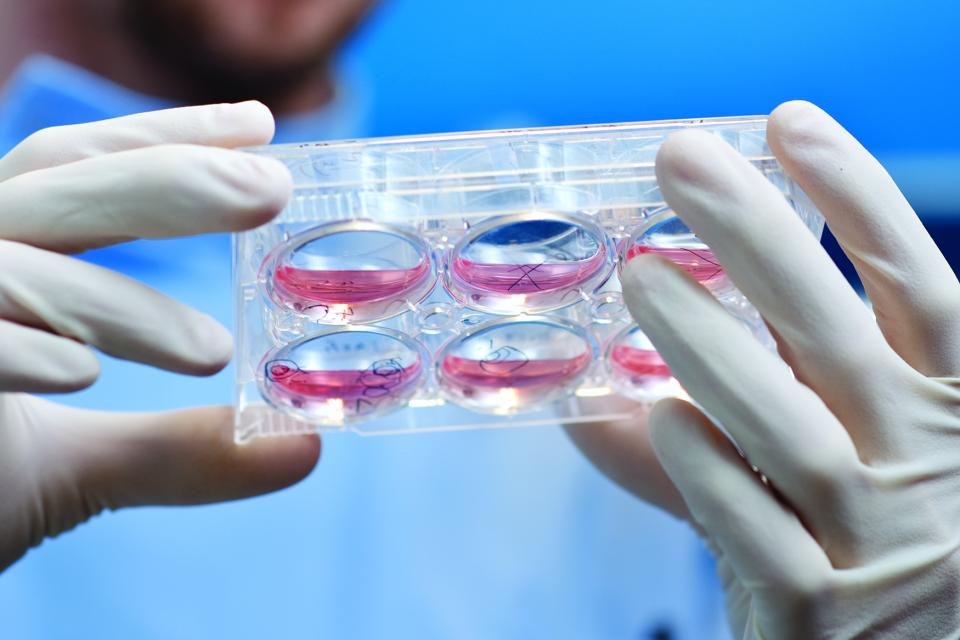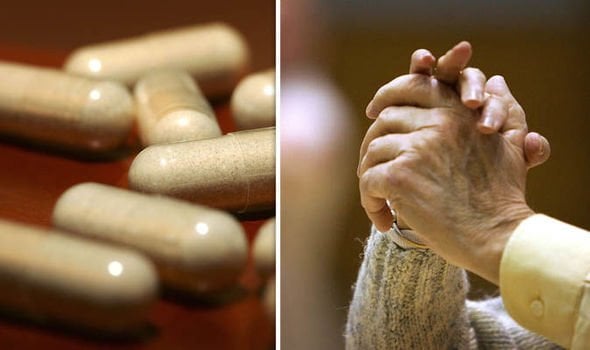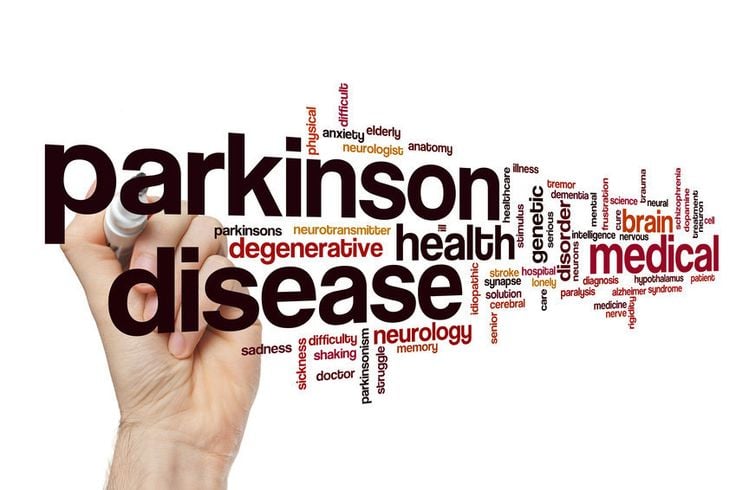What Diseases And Conditions Resemble Parkinsons Disease
PD is the most common form of parkinsonism, in which disorders of other causes produce features and symptoms that closely resemble Parkinsons disease. Many disorders can cause symptoms similar to those of PD, including:
Several diseases, including MSA, CBD, and PSP, are sometimes referred to as Parkinsons-plus diseases because they have the symptoms of PD plus additional features.
In very rare cases, parkinsonian symptoms may appear in people before the age of 20. This condition is called juvenile parkinsonism. It often begins with dystonia and bradykinesia, and the symptoms often improve with levodopa medication.
Searching To Control Symptoms: New Methods Of Delivery
In recent months, symptomatic treatment of PD has had some new developments as well. A new drug for PD, rotigotine, has been introduced in Europe and elsewhere as Neupro. This compound is a dopaminergic agonist, a class of drugs that also includes drugs that have been available for many years in the U.S., including Mirapex, Requip, and Permax . Neupro is unique in how it is delivered: it is absorbed through the skin and so has been marketed as a transdermal patch with continuous delivery over 24 hours. So far, experience with Neupro suggests that it is effective and well tolerated. However, whether this drug or its unique mode of delivery will offer a significant advantage over currently marketed medications of the same class still remains to be learned.
PD still presents many challenges for the medications of the future. Among the unmet needs are ways to reverse the problem of imbalance, especially falling backward. The flexed posture of PD, swallowing and speech difficulties, and situation-specific freezing are all challenges for improved drug therapy. Scientists have not yet determined where in the brain and what types of biochemical disturbance underlie these problems.
Experimental Diabetes Drug Shows Promise In Parkinsons Disease
The drug, MSDC-0160, offers a new approach to treating Parkinsons disease, targeting the underlying disease rather than alleviating symptoms.
Drug discovery and development
Shutterstock
An experimental drug originally developed for type 2 diabetes has shown early promise as a treatment for Parkinsons disease, say researchers who are now planning a clinical trial in humans.
Known as MSDC-0160, the drug differs from current treatments for Parkinsons disease in that rather than simply alleviating symptoms, it is designed to target the underlying disease.
Study leader Patrik Brundin, director of the Van Andel Research Institutes Center for Neurodegenerative Science, Michigan, hopes the study will be a watershed moment for Parkinsons disease research.
All of our research in Parkinsons models suggests this drug could potentially slow the diseases progression in people as well, he says.
He adds that, if successful in human trials, MSDC-0160 would be the first therapy in Parkinsons disease to treat the underlying disease and potentially slow its progression.
Several studies have shown potential similarities in metabolic changes at the molecular level in diabetes and Parkinsons disease. This has led to an increased interest in the effects of thiazolidinediones a group of insulin sensitising drugs in patients with Parkinsons disease, the US researchers report in Science Translational Medicine .
Don’t Miss: Scan To Diagnose Parkinson’s
What New Treatments Are Being Developed
Thanks to the progress we’ve already made, new treatments are being tested in clinical trials that have the potential to slow, stop or even reverse Parkinson’s.
These include:
- Stem cell therapies. These aim to use healthy, living cells to replace or repair the damage in the brains of people with Parkinson’s.
- Gene therapies. These use the power of genetics to reprogramme cells and change their behaviour to help them stay healthy and work better for longer.
- Growth factors . These are naturally occurring molecules that support the growth, development and survival of brain cells.
And we’re developing treatments that aim to improve life with the condition, including new drugs that can reduce dyskinesia.
How Could Stem Cells Help People With Parkinson’s

Stem cells are the parent cells of all tissues in the body. This means they can turn into any type of cell. The hope is that they will eventually be able to make these cells into specific types of cells, like dopamine-producing neurons, that can be used to treat Parkinson’s disease. However, there are concerns that patients may have the same risk of increased involuntary movements as those who undergo fetal cell transplantation. And, like fetal cell transplantation, stem cell therapy is surrounded by moral and ethical controversy.
Recommended Reading: Parkinson’s Disease Electrical Stimulation
Complementary And Supportive Therapies
A wide variety of complementary and supportive therapies may be used for PD, including:
A healthy diet. At this time there are no specific vitamins, minerals, or other nutrients that have any proven therapeutic value in PD. The National Institute of Neurological Disorders and Stroke and other components of the National Institutes of Health are funding research to determine if caffeine, antioxidants, and other dietary factors may be beneficial for preventing or treating PD. A normal, healthy diet can promote overall well-being for people with PD just as it would for anyone else. Eating a fiber-rich diet and drinking plenty of fluids also can help alleviate constipation. A high protein diet, however, may limit levodopas absorption.
Exercise. Exercise can help people with PD improve their mobility, flexibility, and body strength. It also can improve well-being, balance, minimize gait problems, and strengthen certain muscles so that people can speak and swallow better. General physical activity, such as walking, gardening, swimming, calisthenics, and using exercise machines, can have other benefit. People with PD should always check with their doctors before beginning a new exercise program.
Alternative approaches that are used by some individuals with PD include:
What Is Select Justice
Select Justice is a group of investigators and technology professionals who are committed to bringing justice and help to people who are suffering from serious injuries. For over 12 years, we have built a network of legal partners and advisors that are devoted to helping individuals unite and fight against dishonest corporations by holding wrongdoers accountable for their unethical behavior
Read Also: What Does Parkinson’s Do
Full List Of Medications Approved For The Treatment Of Parkinsons Disease In The Usa
Below is a full list of Parkinsons medications that have been approved to treat Parkinsons in the United States. This material is intended to provide you with information. It should not be used for treatment purposes, but rather as a source for discussion with the patients own physician. Work with your physician to determine which medications are best for you, and know the risks and benefits of each.
Establishing Pd Research Priorities
The NINDS-organized Parkinsons Disease 2014: Advancing Research, Improving Lives conference brought together researchers, clinicians, patients, caregivers, and nonprofit organizations to develop 31 prioritized recommendations for research on PD. These recommendations are being implemented through investigator-initiated grants and several NINDS programs. NINDS and the NIHs National Institute of Environmental Health Sciences held the Parkinsons Disease: Understanding the Environment and Gene Connection workshop to identify priorities for advancing research on environmental contributors to PD.
Research recommendations for Lewy Body Dementia, including Parkinsons disease dementia, were updated during the NIH Alzheimers Disease-Related Dementias Summit 2019 .
Don’t Miss: Does Parkinson’s Make You Sleepy
New Approaches In Clinical Trials
Despite an intense research focus on disease-modifying therapies, the traditional pharmacotherapeutic concepts are still worthwhile, as symptomatic therapy of motor and non-motor symptoms with dopaminergic and non-dopaminergic substances is far from optimal, especially in the intermediate to advanced stages of PD.
Is Select Justice A Law Firm
No, Select Justice is not a law firm and is not qualified to give any legal advice. We advocate for those individuals who have been harmed or injured by assisting them with understanding the cause of their situation, identifying who may be responsible, and helping them take steps to pursue justice against the wrongdoers.
You May Like: Parkinson’s Disease Is Diagnosed By
Bacteria Engineered To Produce Parkinsons Disease Drug In The Gut
New research presented at the American Society for Pharmacology and Experimental Therapeutics annual meeting has demonstrated the potential for genetically engineered bacteria to be an effective Parkinsons disease treatment. The researchers created a bacteria that can synthesize a consistent source of medicine inside a patients gut, and animal tests have demonstrated it is safe and effective.
The idea of engineering bacteria to serve as medical treatments is not new. For years scientists have experimented with ways of modifying bacteria to fit our needs, from engineering bacteria to eat up excess ammonia in a human body to helping bacteria hunt down colorectal cancer cells.
Of course, before an idea like this is ready for mainstream clinical uses a number of hurdles need to be overcome. It’s one thing to offer a patient controlled doses of a drug via a pill, but limiting the growth of living microbes engineered to synthesize those same therapeutic molecules in the human gut is a whole different challenge.
New research from a team of scientists has presented an incremental step forward in engineering a novel strain of the human probiotic E.coli Nissle 1917 that has been developed to continually synthesize a Parkinsons disease drug known as L-DOPA.
Glucagonlike Peptide 1 Receptor Agonists And Other Antidiabetic Agents

Biological processes involved in PD share common features with obesity and type 2 diabetes mellitus , including the dysregulation of insulin signaling in the brain. The term brain insulin resistance has been suggested to describe decreased sensitivity of CNS pathways to insulin, followed by disturbances in synaptic, metabolic and immune response functions . Strategies to normalize insulin sensitivity in neurons have thus been in the spotlight of clinical trials aiming to establish whether they may provide neuroprotective actions.
The neuroprotective effect of GLP-1 RAs is assumed to be mediated by improved brain insulin sensitivity however, human studies evaluating their biological effect in the CNS are limited. Functional MRI imaging studies have primarily focused on investigating brain networks involved in the anorectic effect of GLP-1 RAs , but sparse mechanistic data are available for understanding neuroprotective effects of these drugs. In a more recent trial of exenatide in PD, disease modifying effects measured by nigrostriatal dopamine transporter imaging were reported . Subsequently, brain insulin and Akt signaling pathways were also evaluated in neuronal-derived exosomes and it was shown that exenatide treatment, but not placebo, activated these pathways . This significant, secondary analysis of the trial increases understanding of the molecular mechanism underlying the treatment effect and provides a possible biomarker to measure target engagement.
Read Also: What To Expect With Parkinson’s Disease
Who Gets Parkinsons Disease
Risk factors for PD include:
- Age. The average age of onset is about 70 years, and the incidence rises significantly with advancing age. However, a small percent of people with PD have early-onset disease that begins before the age of 50.
- Sex. PD affects more men than women.
- Heredity. People with one or more close relatives who have PD have an increased risk of developing the disease themselves. An estimated 15 to 25 percent of people with PD have a known relative with the disease. Some cases of the disease can be traced to specific genetic mutations.
- Exposure to pesticides. Studies show an increased risk of PD in people who live in rural areas with increased pesticide use.
What Research Is Being Done
The mission of the National Institute of Neurological Disorders and Stroke is to seek fundamental knowledge about the brain and nervous system and to use the knowledge to reduce the burden of neurological disease. NINDS is a component of the National Institutes of Health , the leading supporter of biomedical research in the world. NINDS conducts and supports three types of research: basicscientific discoveries in the lab, clinicaldeveloping and studying therapeutic approaches to Parkinsons disease, and translationalfocused on tools and resources that speed the development of therapeutics into practice. The goals of NINDS-supported research on Parkinsons disease are to better understand and diagnose PD, develop new treatments, and ultimately, prevent PD. NINDS also supports training for the next generation of PD researchers and clinicians and serves as an important source of information for people with PD and their families.
Don’t Miss: Parkinsonism Is Characterized By The Loss Of
Important Points About The New Medications
With multiple new medications available for the treatment of PD, there is more hope than ever that Parkinsons symptoms can be successfully managed for many years. A few things to consider:
- For people whose symptoms are difficult to control, these new treatments are welcome additions to what was previously available and many people with PD have been using these new medications with significant benefit.
- On the other hand, many of the newly-approved medications have the same mechanisms of action as older medications so they are not breaking new ground in treating symptoms.
- In addition, for some people, the effect on symptoms may be mild or not substantial.
These caveats may mean that your physician has not suggested a medication change for you. It is also important to note that despite all the new medications, carbidopa/levodopa remains the most potent medication to treat the motor symptoms of PD.
If your doctor does choose to try one of the new options, there may be multiple paths that your doctor can take when contemplating a medication adjustment. Often trial and error is the only way to determine the best medication regimen for you, so you may need to practice some patience as you work together with your doctor to determine what works or doesnt work.
Study To Identify Clinical Imaging And Biologic Markers Of Parkinson Disease Progression
Sorry, in progress, not accepting new patients
This is a observational, multi-center study to assess progression of clinical features, imaging and biologic biomarkers in Parkinson disease patients compared to healthy controls and in PD patient subtypes. The primary objective of this study is to identify clinical, imaging and biologic markers of PD progression for use in clinical trials of disease-modifying therapies.
La Jolla, California and other locations
Also Check: Deep Brain Surgery For Parkinson’s
Experimental Cancer Drug Shows Promise For Parkinson’s
The study, funded by Parkinson’s UK, suggests that the drug, tasquinimod, which is not yet on the market, works by controlling genes that may cause Parkinson’s. This happens when the drug interacts with a protein inside brain cells.
The team at the Oxford Parkinson’s Disease Centre used cutting-edge stem cell techniques to grow brain cells from skin cell samples donated by people with a rare genetic form of Parkinson’s, and from healthy people without the condition.
The team followed the progression of the condition in brain cells made from the patients’ stem cells and saw that a number of important genes became inactive when problems first started to occur inside the Parkinson’s-inflicted cells.
The “switching off” of these genes early in the process brought the condition on later.
Professor Caleb Webber of Oxford’s Department of Physiology, Anatomy and Genetics, who co-led the study, said: “This is the first time researchers have followed the progression of the condition over time in brain cells in the lab, something we simply cannot do in cells inside the living brain.”
Professor Richard Wade-Martins of Oxford’s Department of Physiology, Anatomy and Genetics, who co-led the study, said: “We think that switching off these genes in brain cells may play a vital role in the cell damage and death that occurs in Parkinson’s. Finding a way to ‘turn them back on’ with a drug could be a promising, unexplored way to develop new treatments.”
What Is Fetal Cell Transplantation
Fetal cell transplantation is a procedure in which fetal cells are implanted into the brains of people with Parkinson’s disease to replace the dopamine-producing cells in the substantia nigra. Although promising, this area of research is one of the most controversial. Some studies have found that fetal cell transplantation caused an increase in severe involuntary movements due to too much dopamine in the brain. There are also moral and ethical objections to the use of fetal cell implants. As a result, other methods of treatment are being explored.
You May Like: Can Parkinson’s Affect Vision
What Genes Are Linked To Parkinsons Disease
Several genes have been definitively linked to PD:
- SNCA. This gene, which makes the protein alpha-synuclein, was the first gene identified to be associated with Parkinsons. Research findings by the National Institutes of Health and other institutions prompted studies of the role of alpha-synuclein in PD, which led to the discovery that Lewy bodies seen in all cases of PD contain clumps of alpha-synuclein. This discovery revealed the link between hereditary and sporadic forms of the disease.
- LRRK2. Mutations in LRRK2 were originally identified in several English and Basque families as a cause of a late-onset PD. Subsequent studies have identified mutations of this gene in other families with PD as well as in a small percentage of people with apparently sporadic PD. LRRK2 mutations are a major cause of PD in North Africa and the Middle East.
- DJ-1. This gene normally helps regulate gene activity and protect cells from oxidative stress and can cause rare, early forms of PD.
- PRKN . The parkin gene is translated into a protein that normally helps cells break down and recycle proteins.
- PINK1. PINK1 codes for a protein active in mitochondria. Mutations in this gene appear to increase susceptibility to cellular stress. PINK1 has been linked to early forms of PD.
- GBA . Mutations in GBA cause Gaucher disease , but different changes in this gene are associated with an increased risk for Parkinsons disease as well.
A Study To Evaluate The Efficacy And Safety Of Intravenous Prasinezumab In Participants With Early Parkinson’s Disease

Sorry, not currently recruiting here
This is a multicenter, randomized, double-blind, placebo-controlled study that will evaluate the efficacy and safety of intravenous prasinezumab versus placebo in participants with Early Parkinson’s Disease who are on stable symptomatic PD medication.
La Jolla, California
Recommended Reading: Parkinson’s And Kidney Problems